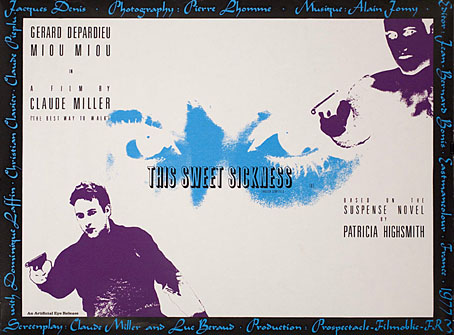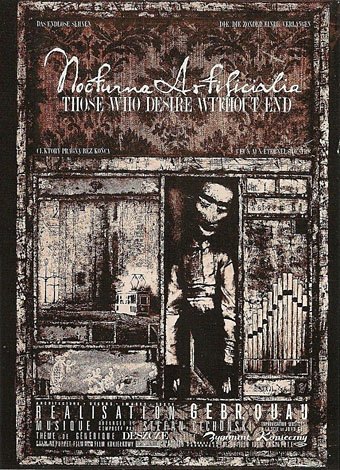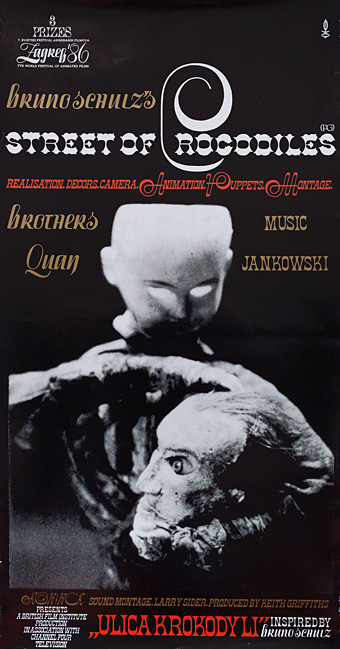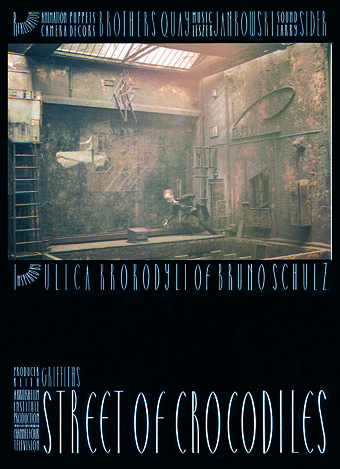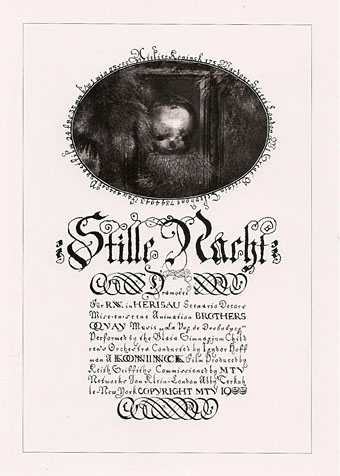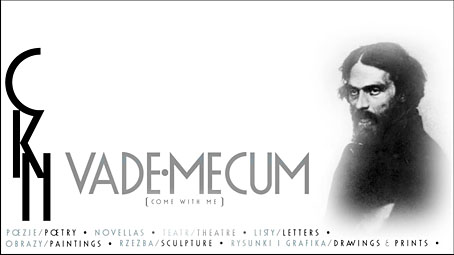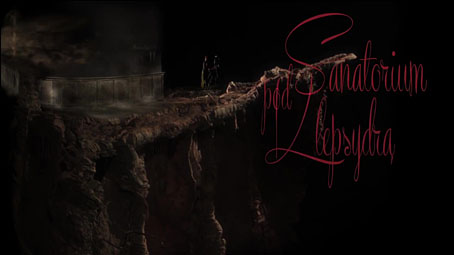This Sweet Sickness (1977).
Looking around for Quay Brothers designs turned up an item I hadn’t seen before, a poster for the UK release of a French film by Claude Miller, This Sweet Sickness, starring Gérard Depardieu. I’ve not seen the film either, nor have I read the Patricia Highsmith novel on which it was based although a copy of the book has been sitting on my shelves for some time, together with a couple of other unread Highsmiths. The poster dates from just before the Quays started to get serious about their own film-making.
Nocturna Artificiala: Those Who Desire Without End (1979). The organ pipes, which don’t appear in the film, are an allusion to the improvised organ score by Stefan Cichonski.
Being graphic designers as well as film-makers puts the Quay Brothers in a very rare class, one where they not only make the films but also design the posters used to promote their films. Offhand, I can only think of the late Eva Svankmajerová as being in the same company so it’s perhaps fitting that her husband and artistic collaborator, Jan Svankmajer, was the subject of an early film by the Quays.
Street of Crocodiles (1986).
Stille Nacht: Dramolet (1988). An early use of Heinrich Holzmüller’s typographic designs.

